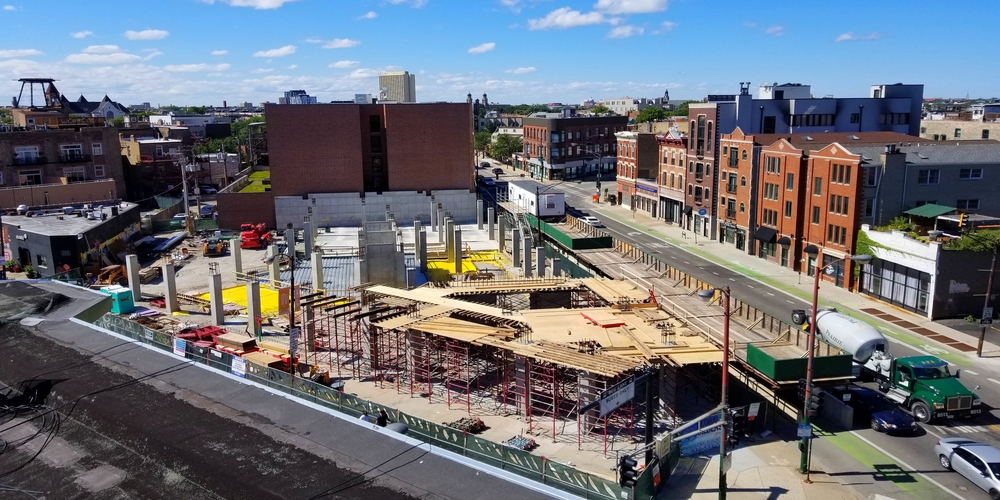Often times we get caught up on material price (or line item pricing) and projects become penny-wise and pound-foolish. As Doug Austin cited in this article, budgetary constraints are now one of the most impactful factors in this industry. When I read Doug’s article and saw the increase in concern with establishing and meeting budget in eDiscovery, I thought how other industries effectively manage this factor.
In order to successfully accomplish building a home on-time, on-budget and to the homeowners’ needs, you would need to have an Architect consult on general needs, draw up blueprints and dimensions, spec materials needed, etc.
Architect is not a defined role within our industry – but the skills are a tremendous avenue for career growth. Anyone can take on the mantle: lit support, attorneys or service providers. So, who is your project’s eDiscovery Architect? I would like to share with you a few simple ways that will help you become your organization’s Architect.
Put Your Foundation in Place
Take responsibility for creating the “blueprints” (workflows), build out budgets, and defining key milestones and deliverables. To accomplish this, make sure you are:
- Asking for thorough budgets with concrete assumptions and expectations
- Understanding the foundational data and custodians that need to be collected from
- Thinking of workflows that are not only well designed but that best suit the specific matter at hand
- Identifying key vendor partners, internal stakeholders and client stakeholders that will be needed to execute on your plan
As you begin laying out your blueprint, don’t worry too much about not having all the information. It’s impossible to know everything at the beginning of the project and things will change. But, establishing a plan at the outset with what you do know will get everyone on the same page to avoid the project becoming a fire drill and you become reactive instead of proactive due to requests, etc. With your blueprint in hand, you can strategically and proactively address the unexpected, keep the project on course and keep everyone in the loop about the changes.
Find the Right Tool for the Trade
Now that you have laid the foundation (or have a game plan in place) it is time to spec out materials and begin executing.
You should start evaluating the tools and weigh the tradeoff of different tools. There are a lot of tools to choose from. With your workflow ideas and the foundation laid out properly, will be best suited to understand what tools are necessary moving forward and where costs can be saved.
Complex matters may call for more complex tools. These tools tend to be a little more expensive and intricate but are also very powerful and effective, reducing your total cost of review. For your more basic matters involving simpler data, you may want to utilize tools or a review platform that is simpler and more streamlined for your case team to navigate through. These tends to have lower price points, but again will not have some high-end features like advanced AI and Analytics.
It is critical to understand what tool is best suited to your situation and needs. A screwdriver might seem like a cheaper option, but you’ll probably want a power drill if you’re assembling an entire house.
Contract the Right People
Just like an expert carpenter costs more on an hourly basis, but saves money in the long-run, so too do your eDiscovery Project Managers. Understanding the trade-offs between price, expertise and reliability relative to your project-needs are where an eDiscovery Architect shines. In home-building, Architects keep a deep bench of service providers and eDiscovery Architects should, too.
If you are working a case that needs heavy use of AI or analytics, then you would go to a vendor or team member that you know has expertise in this area and you can rely on to help with those needs. They can advise you about the technical and legal pitfalls, saving you time and money. Even though having your blueprint established is essential, trusting that your team can execute and make day-to-day adaptations to your plan is what drives real value.
Final Thoughts
eDiscovery projects are often six-figure endeavors, like a house. Because of the amount of the investment involved, you can add a lot of value by creating blueprints for your cases and making sure they are fully executed. The housing industry came up with these roles and processes to build efficiencies and we can learn from them and adapt them to our world.
If you are looking to continue advancing your career within the industry and not quite sure what path to take, I would suggest working towards establishing yourself as the eDiscovery Architect. Organizations are constantly trying to find ways to be more efficient and cost effective, your ability to help them do this successfully is invaluable.
So who is your eDiscovery Architect?

